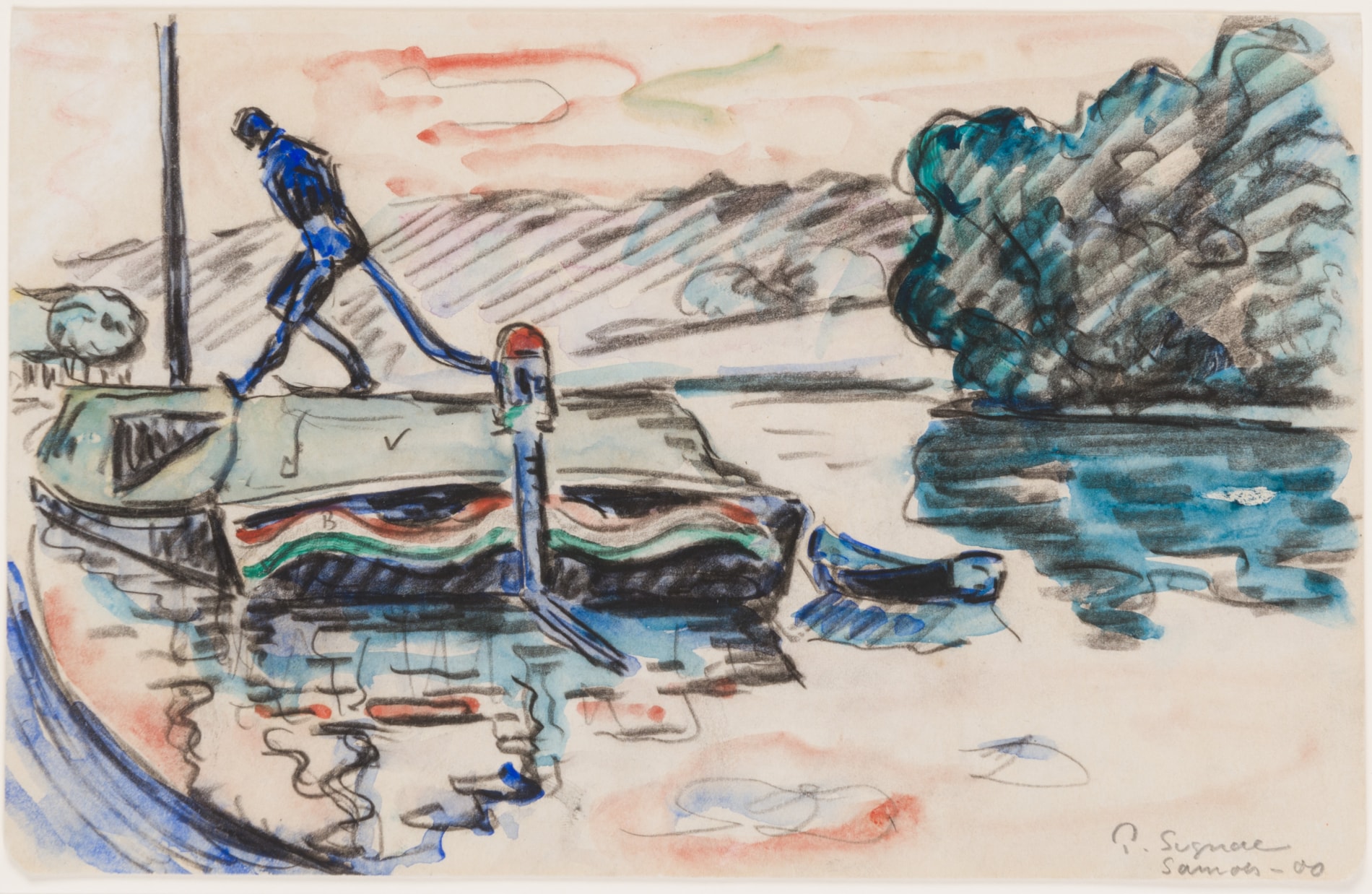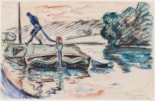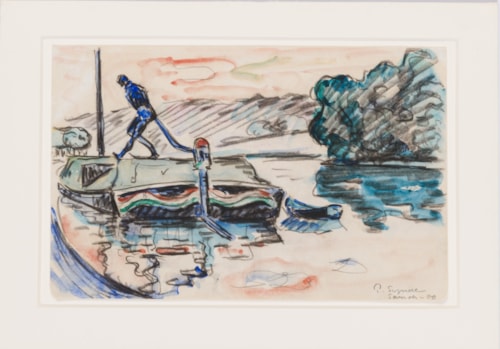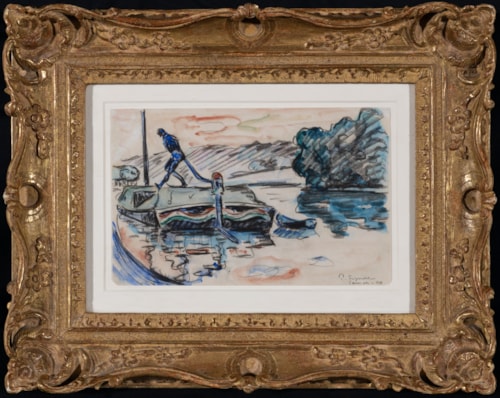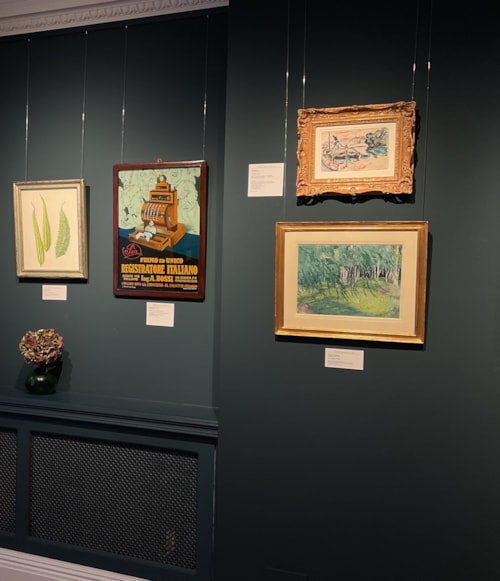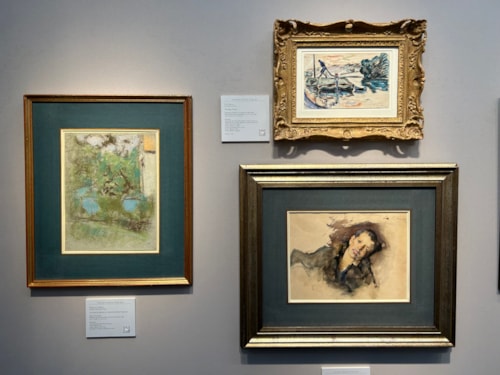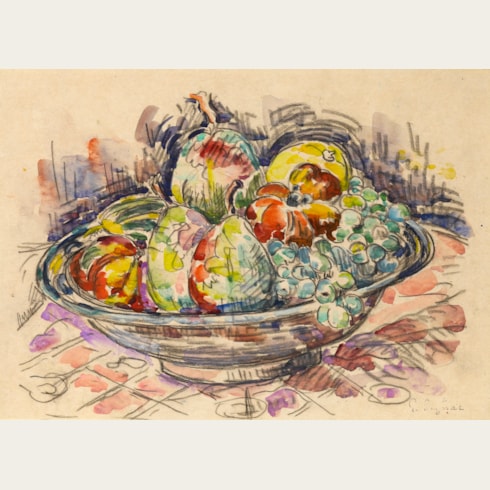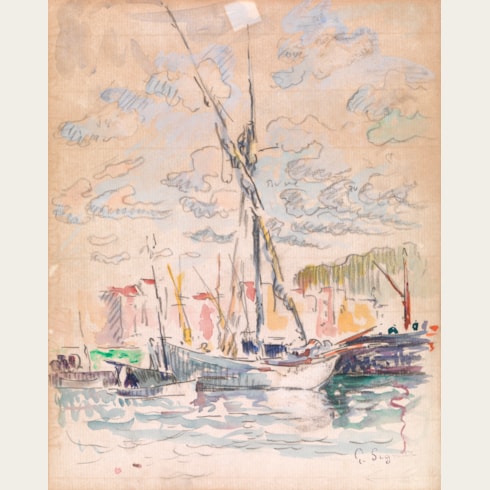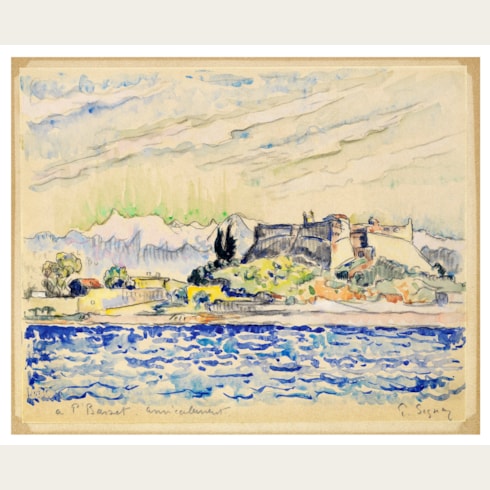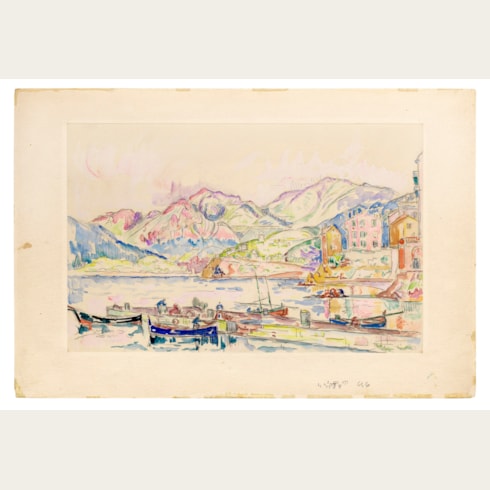Paul SIGNAC
(Paris 1863 - Paris 1945)
The Barge, Samois
Sold
Pencil and watercolour, on a page from a sketchbook.
Signed, dated and inscribed P. Signac / Samois - 00 in pencil at the lower right.
140 x 220 mm. (5 1/2 x 8 5/8 in.)
Signed, dated and inscribed P. Signac / Samois - 00 in pencil at the lower right.
140 x 220 mm. (5 1/2 x 8 5/8 in.)
Executed in 1900, the present sheet was drawn at Samois-sur-Seine, a small village on the river Seine near Fontainebleau, some fifty kilometres southeast of Paris. Paul Signac is known to have visited Samois for several weeks in the fall of 1900, and may also have been there the previous year. This watercolour can be associated with a small number of Neo-Impressionist paintings by Signac depicting the river at Samois-sur-Seine, all painted in 1901, in which similar bargemen appear. These include Samois, The Riverbank, Morning, which was sold at auction in 2013 and is today in the Montreal Museum of Fine Arts, The Tugboat, Samois in the Israel Museum in Jerusalem, and The Lock at Samois, in the Ny Carslberg Glypotek in Copenhagen. Also part of this group is a painting of The Barge, Samois, which is in a private collection in Paris.
A similar Samois subject, with a barge steered by a small bluish figure at the tiller, is also found in a small watercolour by Signac in the Robert Lehman Collection of the Metropolitan Museum of Art in New York. In all, Signac produced some two hundred watercolours of Samois - some of which were exhibited at Siegfried Bing’s gallery L’Art Nouveau in June 1902 - along with thirteen oil sketches and six paintings, during his time there.
A similar Samois subject, with a barge steered by a small bluish figure at the tiller, is also found in a small watercolour by Signac in the Robert Lehman Collection of the Metropolitan Museum of Art in New York. In all, Signac produced some two hundred watercolours of Samois - some of which were exhibited at Siegfried Bing’s gallery L’Art Nouveau in June 1902 - along with thirteen oil sketches and six paintings, during his time there.
Active as a painter, draughtsman, writer and collector, Paul Signac was one of the leading artists of the Neo-Impressionist movement. He came from a wealthy bourgeois family, and as such was able to support the careers of several of his fellow artists as a patron and collector. He became a close friend of Georges Seurat, whose work he first encountered at the inaugural exhibition of the Société des Artistes Indépendants in 1884, and between them the two painters formed the nucleus of the group of artists known as the Neo-Impressionists. Signac would spend the winter working in his Parisian studio, while the summer months were spent painting at a coastal resort, eventually settling in Saint-Tropez from 1892 onwards. In 1904 Henri Matisse spent the summer with Signac at Saint-Tropez, a period that was to have a profound effect on the younger artist.
Signac painted around six hundred canvases as well as a significant body of works on paper, mainly watercolours. As Marina Ferretti Bocquillon has noted, ‘Signac was the neo-impressionist who practiced watercolor most consistently…For him, watercolor was a seductive alternative to the demanding labor of studio painting, a zone of freedom that suited his restless temperament and love of the outdoors. It gradually took over from his work in oil...’
Provenance
Anonymous sale, Paris, Hôtel Drouot, 22 June 1999, lot 72
Anonymous sale, London, Sotheby’s, 20 October 1998, lot 8 (bt. Wolseley)
Wolseley Fine Arts, London
Private collection, London
Cyrille de Gunzburg, Paris, in 2001
Private collection, Paris
Private collection, England.
Anonymous sale, London, Sotheby’s, 20 October 1998, lot 8 (bt. Wolseley)
Wolseley Fine Arts, London
Private collection, London
Cyrille de Gunzburg, Paris, in 2001
Private collection, Paris
Private collection, England.

